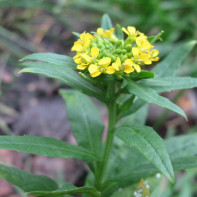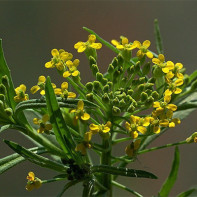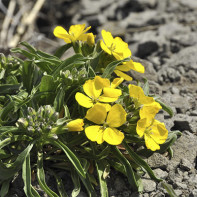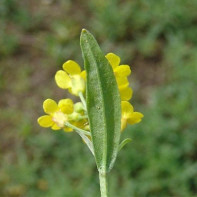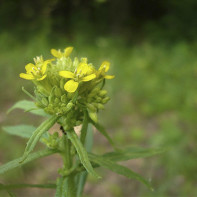Jaundice: medicinal properties and contraindications
Jaundice occupies vast spaces. It is unpretentious and adapts well to any living conditions. Therefore, the plant has long been ranked as a weed. But few people thought, meeting on their way overgrown with jaundice, that this grass can literally save the life of any person who has a sick heart. It is no coincidence that the people of this natural healer were called with such loud names: core, assistant, spas-grass, heart armor. Translated from Greek, the official name of the jaundice also sounds like “healing” or “saving”, as if confirming the unique capabilities of this modest-looking grassy biennial.
- Chemical composition
- How it looks and where it grows
- Kinds
- Collection and storage
- The healing properties of jaundice
- What is useful jaundice when losing weight
- Jaundice in folk medicine
- Heart decoction
- Universal recipe for infusion
- Vodka tincture
- A remedy for heart pain
- Tincture with jaundice for external use
- Remedy for asthma attacks
- Kvass Bolotova
- Healing baths
- Types of healing compounds
- Infusion
- Tincture
- Decoction
- Contraindications
In ancient times, herbalists specially went to the forest to select the best plant specimens. Then it was dried, and then decoctions and infusions were prepared, with which they treated nerves and heart diseases. People’s healers were helped by the experience that was passed down from generation to generation.
Modern physicians trust scientific facts more. Scientists have studied the jaundice well enough and concluded that the plant really has healing power. Today, spas-grass is specially grown in compliance with all the rules of agricultural technology in order to provide the pharmaceutical industry with valuable plant raw materials. We learn in more detail about the chemical composition and medicinal properties of jaundice, what dosage forms can be prepared from it according to popular recipes, what contraindications to the use of herbs exist.
Chemical composition
Nature likes to surprise a person with unexpected surprises. It was such an amazing event for the scientific world that a detailed study of jaundice became. It would seem that a weed that grows everywhere, simply by the logic of things, cannot have such a complex chemical composition. Scientists have worked for more than one year to compile a complete list of individual elements and compounds that are concentrated in the leaves, stem and other parts of this nondescript plant. Indeed, the set of components that the core contains is impressive in variety. The composition of the plant contains:
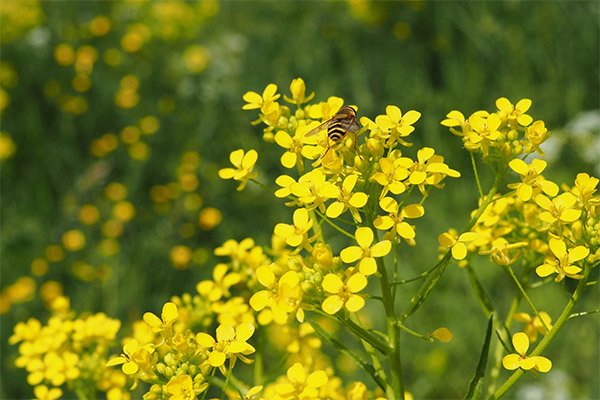
- Glycosides are the main value of healing herbs. The highest concentration is observed in the seeds of the plant. 13 species of substances of this group were distinguished in the icteric, but the majority of the composition are substances of ericridin and erisimine. It should be recalled that glycosides perform the most important work: they regulate the contractility of the heart muscle. They also have sufficiently strong diuretic properties.
- Organic acids control metabolism, participate in the synthesis of amino acids, cleanse tissues and regulate fat metabolism. These compounds cope with inflammatory manifestations. In jaundice, this mission is performed by a group of ascorbic, citric, malic and some other acids of this series.
- Fatty acids are responsible for lipid metabolism and synthesis processes. Even a slight violation of the process leads to serious dysfunctions of the nervous system, because fats are the main material of nerve tissues and cell membranes.
- Flavonoids have earned a reputation as powerful natural antioxidants.
- Bitters are found in large numbers in the jaundice. These substances normalize the acidity of gastric secretions and increase appetite, which, in turn, improves digestion. In addition, bitterness stimulates the production of bile.
- Glucose is considered a universal source of energy.This is a kind of autonomous "power station" that supplies energy to every cell and supports the course of all biochemical processes.
- Mineral elements in the ground part are represented by a whole group: chromium, iron, zinc, calcium.
- Essential components are found mainly in seeds.
It is interesting! By the content of glycosides, the jaundice is several times larger than lily of the valley and digitalis. These substances are present in the entire terrestrial part of the biennial, but most of all in inflorescences and fruits. Therefore, for the production of medicines, the jaundice is collected on raw materials during the flowering period.
How it looks and where it grows
In the botanical respect, the yellowness is considered a primitive plant. It belongs to the cruciferous family. In the wild, there are more than 200 species, but only two varieties possess medicinal properties: sprawling and lefkoid jaundice.
- External characteristics. The core reaches a height of no more than 80 cm, but most often you can meet a plant of 30–40 cm. In the first year of life, a rosette with leaves forms, and after a year the stem actively develops, forming additional branches. The color of the stem depends on the species. The leaves of the jaundice are linear, oblong in shape.
- The flowering period begins in May. At this time, the plant is covered with cute small flowers of a bright yellow hue, collected in a brush.
- Fruits begin to form in June, and this process continues throughout the summer. The mature pod, covered with light villi on the outside, reaches a length of 5–7 cm. Inside, each fruit is filled with tiny brownish-yellow seeds.
- Distribution area. The geography of the jaundice is not limited to any particular area. The plant is found in the Eurasian part of the continent, the biennial occupies especially large areas in Mongolia and Kazakhstan, it feels comfortable in the Caucasus and Crimea. Jaundice likes to settle on the edges of the forest, by the rivers, in the steppe. Often it can be seen on the slopes of the mountains. The most comfortable conditions for grass on sandy and clay soils.
Kinds
As already noted, only two types of jaundice are recognized and listed in official medicine: sprawling or gray and left-handed. Although the general characteristics of the main parameters are the same, there are some differences. Let us dwell on the features of these two types of core.
Gray jaundice has a well-developed root system, and it got its name because of the gray-green color of the stem. This species is distinguished by a branched stem and growth of up to 90 cm. Often found along the edges of tracks, in dense thickets, in arid meadows.
The collection of raw materials of this type is carried out only in the second year of plant life. Freshly collected material is characterized by a high glycoside content, and therefore it goes to the production of potent drugs for the treatment of angina pectoris, various types of arrhythmias, and hypertension.
Left-handed icter is an annual plant, reaching up to 120 cm in height. He also often adorns roadsides, likes to settle in a field and near rivers. The bright green stem of representatives of this species is not as sprawling as that of a fellow, but the inflorescences have a more saturated yellow color. Moreover, first the inflorescence takes the form of a shield, and later transforms into a brush. It is in left-handed jaundice that fetal formation stretches for almost 3 months. He has a larger fruit, the pod differs in a tetrahedral shape.
Left-handed jaundice is considered a poisonous plant due to too high a concentration of glycosides. This type is used not only for the manufacture of heart preparations, it is used for the production of cough and diabetes medications, since it improves the production of insulin. External leukemic jaundice is prepared for the treatment of purulent wounds.
As you can see, in spite of the difference, there are a lot of things in common in two different types of grass of the icter. Often these two plants live in the neighborhood, so their collection is carried out at the same time.
Good to know! Studies have shown that the funds obtained from the icteric are superior in effectiveness to the well-known drug "Strofantin." But they are less toxic than their counterpart.
Collection and storage
Harvesting the yellock for medicinal purposes can begin at the beginning of the flowering period, before the flowers are fully opened. In this case, you must adhere to the following rules:
- Collect plant material in the afternoon after the dew has dried.
- Cut the ground part at a distance of 15 cm from the ground.
- Inspect each specimen carefully, remove dark leaves and sections of the stem. Then cut the grass into fragments.
- To lay out on paper for the time of drying or to use a baking sheet for this purpose.
- Every day, turn the raw materials to prevent mold.
- It is allowed to dry the raw materials in the oven at a temperature of 50-60 ° C, you can also use an electric dryer for this purpose.
- Well-dried material is best stored in a cardboard box or paper bags. The room where valuable raw materials are stored should be cool and ventilated regularly. The shelf life of the material prepared according to all the rules is 1 year.
- Seed collection is carried out after the pods have fully ripened. Fruits must be removed carefully, as pods from careless movement quickly open, and seeds spontaneously sown in the ground.
Important! The sprawling appearance of the yellowness is mainly used fresh, since when dried, the healing properties disappear.
The healing properties of jaundice
For the first time, the jaundice was thoroughly investigated back in 1940 by scientists of the Tomsk Medical Institute M. Varlakov and N. Vershinin. The results showed that the glycosides contained in the plant act gently, improving myocardial contractility. In addition to cardiotonic action, such drugs simultaneously show a sedative effect. Thanks to the studies, such well-known drugs as Cardiovalen, Erizimin appeared. These medications have been used for many decades to treat severe cardiac pathologies.
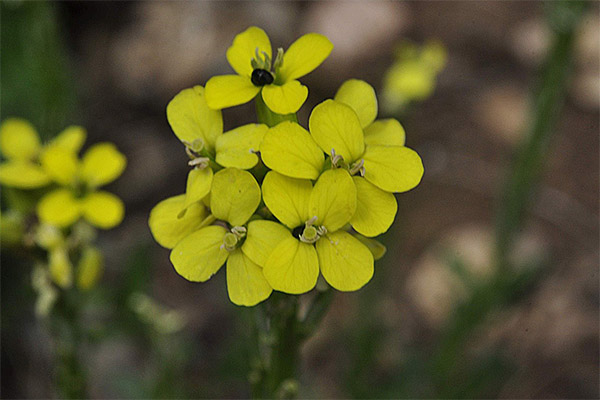
Popular homemade recipes are popular. If to summarize all the medicinal properties of jaundice, the following actions should be added to this list:
- lowers blood pressure;
- normalizes coronary blood flow;
- eliminates the feeling of discomfort, which is a constant companion of cardiac pathologies;
- eliminates signs of dyspnea (feeling of lack of air);
- reduces the oxygen demand of the heart muscle;
- removes swelling;
- reduces heart rate.
But, in addition to a direct effect on the work of the heart and blood vessels, drugs with yelliflower still demonstrate a number of useful effects:
- anti-inflammatory;
- antiseptic;
- wound healing;
- expectorant;
- antispasmodic;
- choleretic;
- antioxidant.
This additional set of useful properties expands the range of possibilities of the plant. That is, it can be used not only to eliminate heart problems, but also to solve other problems.
Indications for the use of medicinal herbs
I immediately want to remind you that any self-medication, especially when it comes to heart health, is always fraught with serious risks. Given the complex composition of the yelliflower grass, the risks increase significantly. Therefore, any, even the most miraculous herbal recipes can be used only after agreement with the doctor. And one more thing: all folk remedies are an addition to the main treatment. Having mastered these two cornerstones, you can choose a prescription that will help improve the overall well-being of patients if they have been diagnosed with the following diseases:
- heart failure;
- mitral valve defects;
- atrial fibrillation;
- myocarditis;
- cardiac ischemia;
- rheumatoid heart disease;
- bronchial asthma;
- tuberculosis;
- dyspnea;
- gastrointestinal pathology;
- migraine;
- edema of various origins;
- varicose veins;
- disorders of the musculoskeletal system;
- diabetes.
With strict adherence to the rules for the preparation of drugs from the herb of the jaundice, home treatment will be a good help even with severe forms of the above pathologies.
What is useful jaundice when losing weight
I would like to draw attention to the fact that scientific research on the benefits of the yolk grass in the process of weight loss has not been conducted. But the general properties of this plant allow us to conclude that the compositions prepared on its basis will contribute to weight loss. The experience of home use of saved herbs shows that taking 100 mg (0.1 g) of the powder 20 minutes before meals for a month helped some women lose 4 kg in one course. And this result is not surprising, since the organic acids contained in the plant break down fat deposits well. Consider what other processes in the body of a person who wants to lose weight trigger the components of a healing plant:
- The ability to maintain normal sugar levels dulls hunger.
- Like a diuretic, the plant removes excess fluid and prevents the appearance of edema.
- Preparations with jaundice normalize the liver and pancreas.
- High blood pressure is a constant companion of obesity, and the core normalizes blood pressure.
It is advisable to consult a doctor before taking a jaundice for weight loss. If the specialist approves this method, you need to follow a few simple rules in the process of therapeutic weight loss:
- You can not combine the use of drugs from Spas-herb with alcohol, fatty and fried foods.
- Dry powder should be taken strictly at the indicated dosage, washed down with a small amount of clean water.
- Between courses it is necessary to withstand two-week pauses.
Useful! In addition to the medical field, icteric is actively used in cosmetology. Decoctions based on it help strengthen hair and eliminate dandruff.
Jaundice in folk medicine
Official medicine always has a positive attitude towards complementary treatments according to traditional recipes. Of course, experts evaluate the useful properties of a particular plant apparatus, relying on a scientific evidence base. In this regard, the grass of the jaundice is unrivaled, because the best domestic scientists studied it. Therefore, after consulting with your doctor, you can choose one of the following popular recipes.

Heart decoction
This tool helps to normalize heart function and improve the main blood circulation. Almost immediately after taking the decoction, the pulse rate evens out, the tachycardia disappears. Along the way, a decoction of jaundice according to this recipe helps to cope with edema caused by heart disease.
How to cook:
- 2 tsp dry herbs pour a glass of boiling water.
- Determine the solution in a water bath.
- After 10 minutes, remove the broth, cool a little.
- Filter the drink before use.
- Supplement the initial volume by adding ordinary boiled water.
- Broth take 1 tbsp. up to 4 times.
Universal recipe for infusion
And this recipe is worth taking note of for those who have a bad dream and constantly jump in pressure. The tool will help to cope with a strong cough with bronchitis and impaired renal function. It’s also good for the heart to drink a course of a drink prepared in such a simple way:
Take ½ tsp dry plant material and brew it in a cup, like regular tea. In order for the drink to gain healing power, it must be infused for 2 hours.Pour the resulting solution into a jar and refrigerate. Take this medicine three times a day for 1 tbsp. The minimum course of treatment to achieve a therapeutic effect is 2 months.
Vodka tincture
This is also one of the options for universal remedies based on the grass of the jaundice. To prepare the medicine, you need 250 ml of good quality vodka and 40 g of herb. You can take fresh plant material or dried. In a glass container, combine both components, then determine in a dark place for infusion. The exposure time is 14 days. But daily, the jar needs to be shaken to activate the components of the composition of the grass. After filtering the finished tincture, take 10-20 drops. But this amount of medicine must be diluted in a glass of water. You can’t drink tincture for more than three months in a row. It is better to take a break for a month, and then resume home treatment again.
A remedy for heart pain
The method of preparation of this tincture is similar to the previous option, but with the difference that this composition is more concentrated. Also, it should be taken when certain symptoms appear, that is, pain in the region of the heart, rhythm disturbance, shortness of breath. The ratio of the main ingredients is determined as follows: first put dry grass in the container so that it covers the bottom of the can. Pour so much vodka on top so that the liquid level is a finger thick above the line of grass. After two weeks of insisting, filter the product. Drink 20 drops, diluted with water, with severe attacks.
Tincture with jaundice for external use
From the solution obtained according to this recipe, lotions and compresses can be made or used for rubbing, for example, diseased joints.
Necessary components:
- Zest of medium lemon.
- Alcohol - 0.5 l.
- Dry jaundice (gray) - 30 g.
- Propolis - 20 g.
Mix all of the listed ingredients in one container, then leave the mixture for 2 weeks in a dark place. Store the finished medicine in a container of dark glass. The procedures are best performed at night, because the compress should be kept for 1.5–2 hours.
Remedy for asthma attacks
In the process of preparing the medicine for this recipe, other proportions of the two main ingredients are used:
- Jaundice - 30 g.
- Vodka - ¼ l.
As in previous recipes, which, however, is traditional for the preparation of tinctures, mix the ingredients in one container, and then determine in a dark place for infusion for a period of 3 weeks.
Take the drug about a quarter of an hour before meals. A single dose is 10 drops. Tincture must be diluted with water. This recipe can be used to treat angina attacks.
Kvass Bolotova
This technique was developed by the famous doctor B. Bolotov, and it is based on the ability of enzymatic drinks on medicinal herbs to activate the course of biochemical processes in the human body. For the preparation of a medicinal decoction, any useful plants are suitable, but in this case, the grass of the jaundice will appear in the formulation. The essence of the preparation of the drink is that a lactic acid product is used together with the herbal preparation. It can be sour cream, whey, yogurt. These products play the role of leaven. So, for kvass on the jaundice you need to take 1 tsp. sugar and sour cream and 50 g of plant material.
Next, proceed according to this scheme:
- Boil 3 l of water, cool it to room temperature.
- Send all ingredients to the liquid.
- Put the dish with the mixture in heat so that the drink ferments, as it should be. The fermentation process should last 2 weeks.
- All this time, mix the kvass periodically with a wooden spoon.
- When the kvass is ready, drink half a glass before each meal in about half an hour.Moreover, each time to replenish the initial volume of fluid, and also add 1 tsp. Sahara.
Kvass Bolotova will help patients recover faster after a heart attack, it should be drunk with stable angina pectoris, arrhythmias, edema. Together with medicinal kvass, it is recommended to take 0.1 g of dry powder of yellifice to stimulate the production of insulin by the pancreas.
Healing baths
Such procedures will benefit not only patients with heart problems, but also completely healthy people. Indeed, overwork and tension negatively affect the state of the nervous system, and this affects the work of the heart. It is no accident that the expression is widespread that all diseases come from nerves. In this statement lies the true meaning, because in the human body everything is interconnected. For a therapeutic water procedure, it is necessary to prepare a concentrated infusion or a decoction of yellowness, and then pour it into a bath filled with water. The duration of one session is 10-15 minutes. Usually a positive result is noted immediately after the first procedure: the heart rate is leveled, the state of the nervous system stabilizes, insomnia disappears.
Types of healing compounds
The pharmacological properties of saved herbs are described in many directories. Plant raw materials are in demand in the pharmaceutical industry and traditional medicine. On the basis of correctly prepared plant materials, medicinal infusions and decoctions can be prepared, which are then used for various pathological manifestations for internal use and external treatment methods. The main advantage of home-made medicines is that their preparation is very simple. Let us cite as an example methods for making the most popular dosage forms.
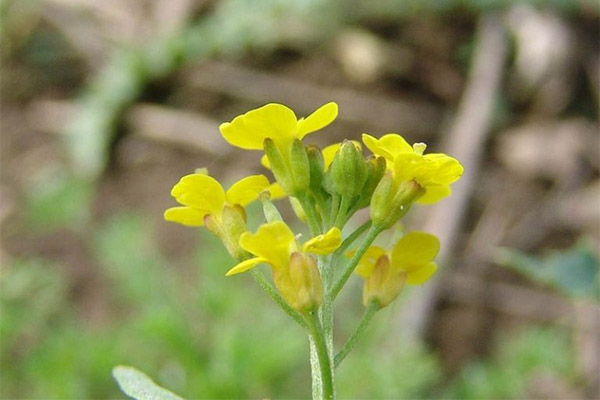
Infusion
The classic recipe for jaundice is suitable for the treatment of hypertension, ascites, and neurological diseases. But, of course, the main purpose is heart pathology.
Cooking sequence:
- First step: take 0.5 tsp. plant material, pour it into a cup and pour cool boiling water.
- For better insisting, cover the container with a lid, and then wrap it with a towel.
- After two hours of infusion, strain the infusion.
- Drink 1 tbsp. on an empty stomach.
Tincture
For the base tincture, you should buy only high-quality vodka. Home-made moonshine for this purpose will not work, but purified alcohol is allowed to be used. So, for 80 g of dry yellowness, take a whole bottle of vodka. In a container (preferably dark glass) mix both components. Insist the medicine in the dark for exactly 2 weeks. Shake a jar or bottle daily. Before taking, put the required amount of tincture with water. For an adult, the optimal dose in one dose is 20 drops. The tincture prepared according to this recipe will help with asthma attacks and angina pectoris.
Decoction
This is a sedative, which will help normalize heart function during stressful situations or strong excitement, and at the same time bring the nerves back to normal. The sequence of actions is as follows:
- Pour 1/2 liter of boiled water into a large cup.
- Add 1 tsp. herbs
- Identify the mixture in a water bath. You can not allow boiling of the composition, it should just languish on a low light.
- After 10 minutes, remove the broth and leave it so that it is insisted.
- Then strain and bring the amount of liquid to the original volume.
- Take up to 4 times 1 tbsp.
Contraindications
The toxic properties of the jaundice are evidenced by the fact that in cows, after its use, severe intoxication is observed. Therefore, the use of drugs involving this controversial plant should be treated with extreme caution. Particular attention should be paid when determining the dosage. In this case, even just a few extra drops can lead to serious health consequences.
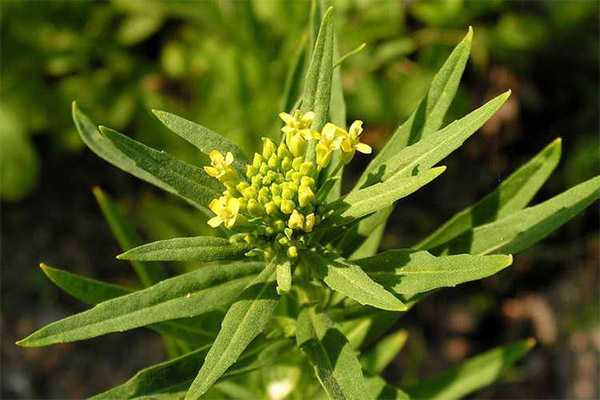
The following diseases and conditions are absolute contraindications for therapy with the inclusion of drugs with jaundice:
- pregnancy;
- period of breastfeeding;
- childhood;
- myocarditis in the acute phase;
- endocarditis;
- severe form of cardiosclerosis;
- advanced atherosclerosis.
Exceeding the recommended dosage can cause a sharp drop in blood pressure and arrhythmia.
Symptoms of an overdose:
- general weakness;
- increased salivation;
- nausea and vomiting;
- severe headaches;
- bradycardia;
- low blood pressure.
With such a clinic, you must immediately stop taking medications with jaundice and contact a medical institution for medical help.
The effectiveness of the jaundice is proven, so today it is quite actively used in medicine. But since the plant is on the list of toxic, and the preparations obtained from it are potent drugs, you need to use it very carefully at home.
«Important: all information on the site is provided exclusively in fact-finding purposes. Before applying any recommendations, consult with a profile specialist. Neither the editors nor the authors are liable for any possible harm caused materials. "

